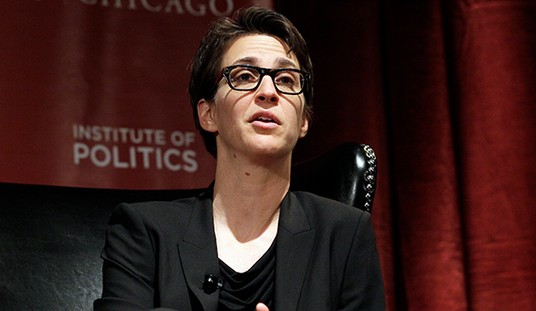The job market whiffed on expectations in March, according to a new jobs report from the Bureau of Labor Statistics, turning in its worst performance in six months. The US economy added only 103,000 jobs last month, about half of what economists expected and far below the projections from ADP earlier in the week. Civilian labor force numbers all hit retreat, too:
Total nonfarm payroll employment edged up by 103,000 in March, and the unemployment rate was unchanged at 4.1 percent, the U.S. Bureau of Labor Statistics reported today. Employment increased in manufacturing, health care, and mining.
In March, the unemployment rate was 4.1 percent for the sixth consecutive month, and the number of unemployed persons, at 6.6 million, changed little.
Revisions on the previous two months’ reports took another 50,000 jobs off the count as well:
The change in total nonfarm payroll employment for January was revised down from +239,000 to +176,000, and the change for February was revised up from +313,000 to +326,000. With these revisions, employment gains in January and February combined were 50,000 less than previously reported. (Monthly revisions result from additional reports received from businesses and government agencies since the last published estimates and from the recalculation of seasonal factors.) After revisions, job gains have averaged 202,000 over the last 3 months.
That’s still a good average, and March might wind up being an outlier. However, it’s a rather stunning drop from February’s breakout numbers and might suggest that recent economic policy moves have employers pulling back on risk. Tax cuts gave employers confidence in long-term investment; have tariffs and potential trade wars sapped that confidence and incentivized employers to hoard cash again?
Those numbers come from the relatively stable Establishment survey. The Household survey continues to fluctuate widely, however. Last month, some hailed a massive return to the civilian workforce suggested by the jobs report, with the Household survey adding 806,000 to the workforce and showing that 653,000 left the “not in labor force” statuses in February. This month, 323,000 got added to the “not in labor force” number and the civilian labor force declined by 158,000.
So how big of a miss is this? ADP, which calculates based on its own payroll services, had predicted a net gain of 241,000 jobs in March. Other economists had the number closer to 200,000 jobs. Either way it’s a big miss, and also on its own below the maintenance level of jobs required to keep unemployment in check in the long run.
CNBC’s Jeff Cox notes that the numbers weren’t all bad, particularly in wages:
Economists had been expecting a payrolls gain of 193,000 and the unemployment rate to decline one-tenth of a point to 4 percent. The monthly reading was a huge slip from the 326,000 reported in February.
A broader measure of unemployment that includes discouraged workers and those holding part-time positions for economic reasons — the underemployed — fell two-tenths of a point to 8 percent, its lowest reading in 11 years.
In addition to the payrolls news, the closely watched average hourly earnings figure rose 0.3 percent, against estimates of 0.2 percent. The number equates to 2.7 percent on an annualized basis. The average work week was unchanged at 34.5 hours.
The AP’s Christopher Rugaber also tends to see the economic glass as half-full, writing that the “economy appears fundamentally healthy”:
U.S. employers added a modest 103,000 jobs in March after several months of bigger gains, though the government’s overall jobs report suggests that the labor market remains healthy.
The Labor Department said Friday that the unemployment rate remained 4.1 percent, a 17-year low, for a sixth straight month. Average hourly pay ticked up, climbing 2.7 percent compared with a year earlier.
Hiring has accelerated since last fall, defying expectations that a shortage of workers would make it harder for companies to fill open positions. Employers have added a healthy average of 211,000 jobs a month in the past six months.
Reuters’ Lucia Mutikani predicts that consumer habits won’t change as a result, and neither will Fed policy:
With labor market slack diminishing, wage growth picked up a bit in March. Average hourly earnings rose eight cents or 0.3 percent last month after edging up 0.1 percent in February. The gain lifted the annual increase in average hourly earnings to 2.7 percent from 2.6 percent in February.
Economists say annual wage growth of at least 3 percent is needed to lift inflation toward the Fed’s 2 percent target. There is hope that wage growth will accelerate in the second half of the year and allow the Fed to continue raising interest rates.
The Fed increased borrowing costs last month and forecast two more interest rate hikes this year. Economists did not see an impact on hiring in the near-term from a recent stock market selloff, which has caused a tightening in financial conditions.
That mainly took place in the final days of the month, however. If markets continue to roil over tariff battles, the capital that might have otherwise gone into job creation might get set aside — or may evaporate altogether, at least in the short run. Unless the issues get resolved quickly, we may be seeing a stasis in job creation that could hamper the positive impact of the administration’s other economic policies, especially the tax cuts.
It’s early yet, but Republicans need a long string of uninterrupted good economic news in order to counter the natural midterm backlash, along with other issues that are specific to this election cycle. They can’t afford multiple months of below-expectation job growth. If this extends for more than a month, it’s going to set up some unpleasant expectations for November.








Join the conversation as a VIP Member